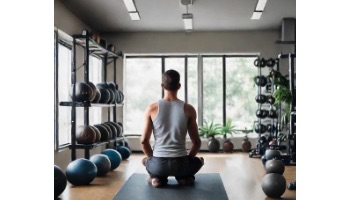 Fitness and exercise is usually focused on physiological change. We’re looking for bigger muscles, less body fat, more effecient cardiovascular systems, stronger bones. But there is a whole other dimension to what happens when you work out: learning. Understanding the role learning plays is a critical part of getting in shape.
Fitness and exercise is usually focused on physiological change. We’re looking for bigger muscles, less body fat, more effecient cardiovascular systems, stronger bones. But there is a whole other dimension to what happens when you work out: learning. Understanding the role learning plays is a critical part of getting in shape.
When you exercise, you are learning how to move, how to recover, how to plan and execute, the list goes on. Knowing more about this education and how it happens will give you some important insights into what to expect from exercise, how to improve, and ultimately how to get the most out of it. Here’s a few of the key points:
Learning Involves Repetition
Learning is in part the process of forming new memories (encoding), retaining those memories (storage), and then accessing those memories (retrieval).1 As we all know, that process is smoothest with things that we do repetitively, either because we experience them everyday as a matter of course (our jobs), or because we choose to practice them (guitar, golf, etc.). Exercises, especially free-weight movements, equally require practice because there is form that has to be learned. Without good form, you won’t get the maximum benefit and you may also be exposing yourself to a higher risk for injury.
Since practice is important, good training involves sticking to a specific routine. You need to give yourself the chance to go through the stages of encoding, storage, and retrieval, and that means repetition. That doesn’t mean you won’t do different exercises and different intensities throughout the year, because you will—especially if you are periodizing properly—but it does mean that you want to make sure your program involves enough continuity for you to learn the skills and to get the adaptations you are looking for. Too much and too frequent variety, in contrast, can work against you.
Learning Requires Strategy, Structure, And Time
Cramming works for a test (sometimes), but it isn’t great for long term retention and understanding. Learning material in small increments over longer periods of time, a concept known in the academic world as distributed practice, works better.2 Weightlifters understand this, which is why there is a clear structure to how they are coached. New weightlifters start with basics. Over time, more advanced concepts are introduced slowly and only when the athlete has demonstrated that they are ready for something new. In any given session, athletes focus on one or maybe two things at most, not a litany of changes. Key concepts are regularly revisited. In short, it’s an educational curriculum, not a random smorgasbord of workouts.
These principles produce better results, and it is why good training takes time. It’s just like learning a musical instrument. You start with scales, not with Mozart. So, when you set out to get into shape, make sure to give yourself a realistic time-frame. You really need to be thinking in terms of months and years, not days and weeks.
Truly Learned Material Is Transferrable
This can be one of the most exciting things about exercise. One of the ways you know that you have truly learned something is when you can take the material and apply it to new situations.3 There are many elements of exercise that become hugely beneficial once you have learned them with this level of mastery. The ability to properly move and set the shoulder blades, for example, is important in every strength exercise, from seated rows to deadlifts, to squats to overhead press, from bench press to planks. It’s also important for general shoulder health and good posture in everyday life. Once you have learned and mastered the ability to move those shoulder blades properly, you’ll be able to transfer that skill from exercise to exercise and from daily situation (carrying groceries, putting a suitcase in the overhead compartment) to daily situation, and that is what really changes you for the better.
When you are working out, you should find that you are learning transferrable skills. If you find that your exercise happens in a vacuum, and you aren’t discovering things and learning how to apply them to different situations in your life, then you are missing out.
The Most Solid Learning Requires Challenge
“The science of Learning literature is actually quite clear about this. We are best positioned to optimize memory through “desirable difficulties.” In this sense, learning is about challenge, failure, understanding why something is wrong before getting it right.”4
New skills, whether they be cognitive or physiological, are most difficlut to maintain under stress. Usually, when the going gets tough, the body will attempt to move back to its default. That’s why getting better sometimes requires you to push past your comfort zone. It will be hardest, to maintain our example, to keep the shoulders back in a heavy squat or deadlift, which is exactly why building up weight (properly and over time) makes you better at that skill in all situations.
At the same time, be aware that physical challenges stress your skills, so they are also higher risk. Add intensity to your program, but do it with structure and planning.


